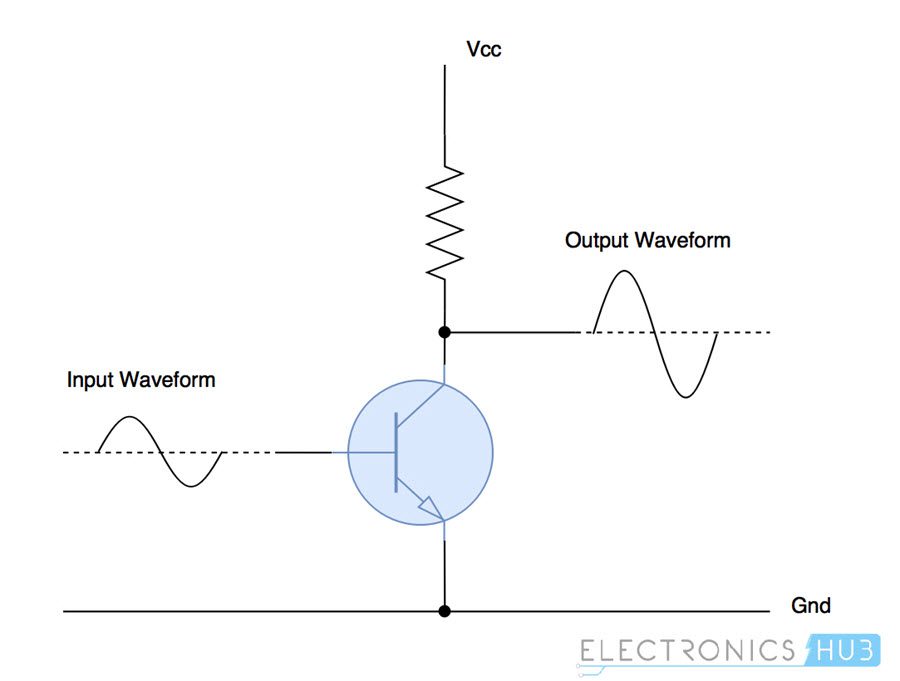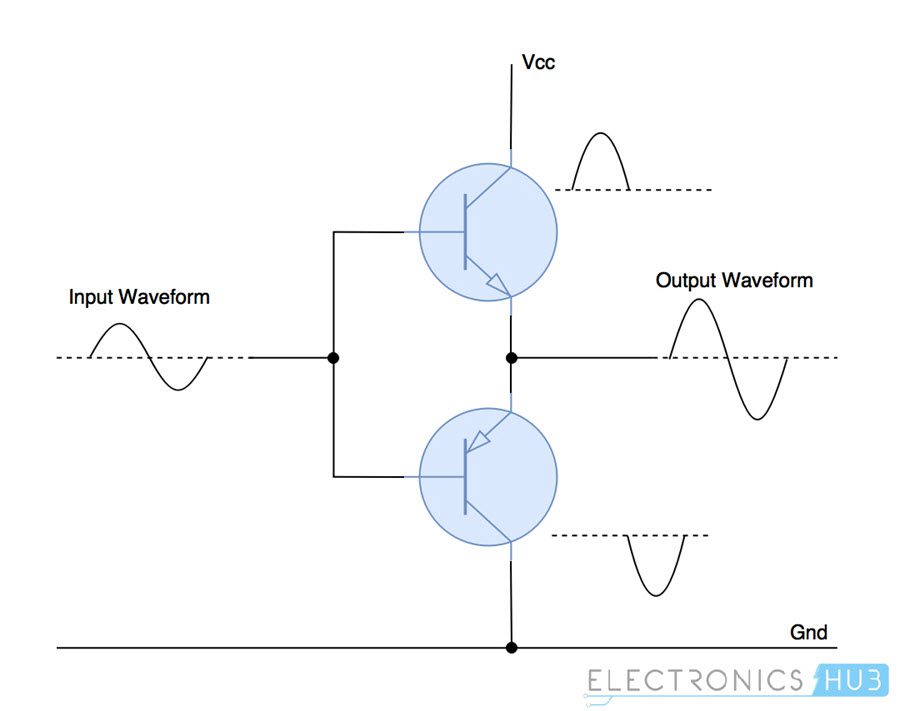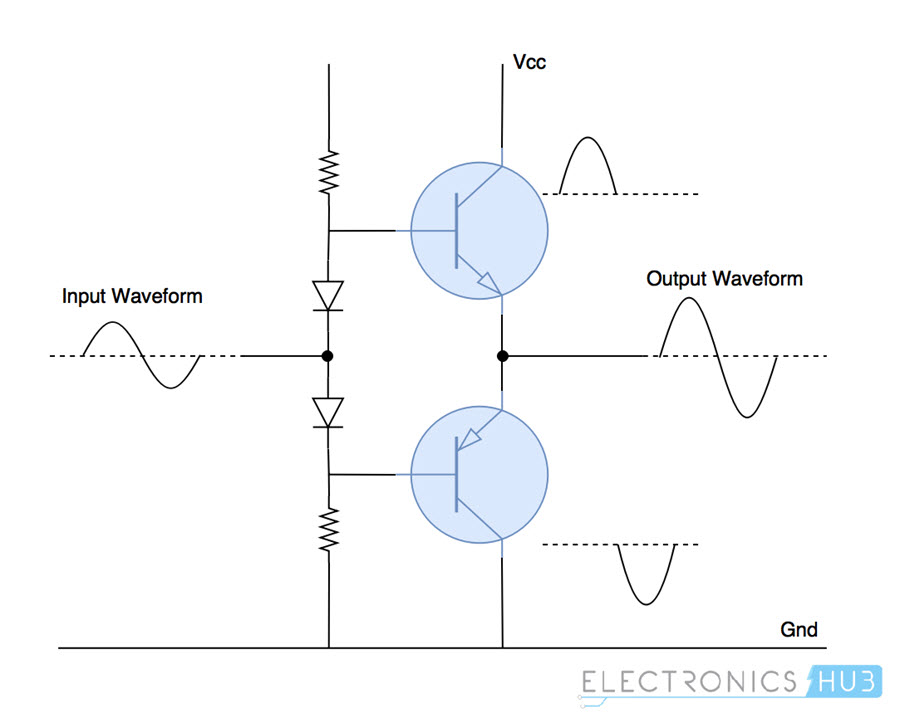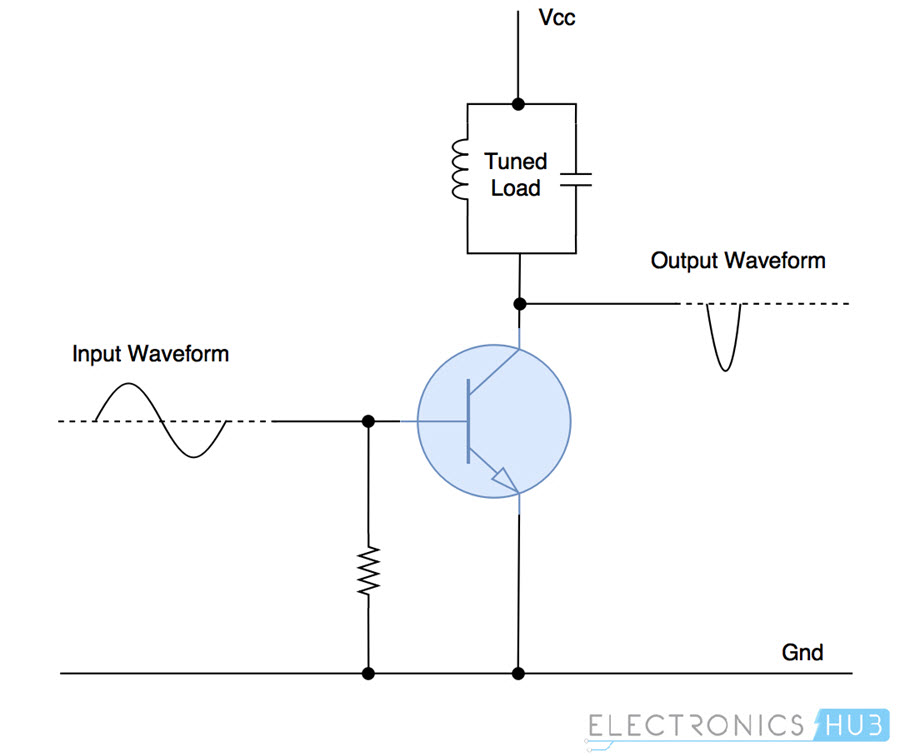Introduction
An amplifier is an electronic device used to increase the magnitude of voltage/current/power of an input signal. It takes in a weak electrical signal/waveform and reproduces a similar stronger waveform at the output by using an external power source. Depending on the changes it makes to the input signal, amplifiers are broadly classified into Current, Voltage and Power amplifiers. In this article we will learn about power amplifiers in detail. For more information on different types of amplifiers: Different Types and Applications of Amplifiers
What is a Power Amplifier?
A power amplifier is an electronic amplifier designed to increase the magnitude of power of a given input signal. The power of the input signal is increased to a level high enough to drive loads of output devices like speakers, headphones, RF transmitters etc. Unlike voltage/current amplifiers, a power amplifier is designed to drive loads directly and is used as a final block in an amplifier chain. The input signal to a power amplifier needs to be above a certain threshold. So, instead of directly passing the raw audio/RF signal to the power amplifier, it is first pre-amplified using current/voltage amplifiers and is sent as input to the power amp after making necessary modifications. You can observe the block diagram of an audio amplifier and the usage of power amplifier below.
In this case, a microphone is used as an input source. The magnitude of signal from the microphone is not enough for the power amplifier. So, first it is pre-amplified, where its voltage and current are increased slightly. Then the signal is passed through a tone and volume control circuit, which makes aesthetic adjustments to the audio waveform. Finally, the signal is passed through a power amplifier and the output from power amp is to a speaker.
Types of Power Amplifiers
Depending on the type of output device that is connected, power amplifiers are divided into the following three types:
Audio Power Amplifiers RF Power Amplifiers DC Power Amplifiers
Audio Power Amplifiers
This type of power amplifiers are used for increasing the magnitude of power of a weaker audio Signal. The amplifiers used in speaker driving circuitries of televisions, mobile phones etc. come under this category. The output of an audio power amplifier ranges from a few milliwatts (like in headphone amplifiers) to thousands of watts (like power amplifiers in Hi-Fi/Home theatre systems).
Radio Frequency Power Amplifiers
Wireless transmissions require modulated waves to be sent over long distances through air. The signals are transmitted using antennas and the range of transmission depends on the magnitude of power of signals fed to the antenna. For wireless transmissions like FM broadcasting, antennas require input signals at thousands of kilowatts of power. Here, Radio Frequency Power amplifiers are employed to increase the magnitude of power of modulated waves to a level high enough for reaching the required transmission distance.
DC Power Amplifiers
DC power amplifiers are used to amplify the power of a PWM (Pulse Width Modulated) signals. They are used in electronic control systems which need high power signals to drive motors or actuators. They take input from microcontroller systems, increase its power and feed the amplified signal to DC motors or Actuators.
Power Amplifier Classes
There are multiple ways of designing a power amplifier circuit. The operation and output characteristics of each of the circuit configurations differs from one another. To differentiate the characteristics and behavior of different power amplifier circuits, Power Amplifier Classes are used in which, letter symbols are assigned to identify the method of operation. They are broadly classified into two categories. Power amplifiers designed to amplify analog signals come under A, B, AB or C category. Power amplifiers designed to amplify Pulse Width Modulated (PWM) digital signals come under D, E, F etc. The most commonly used power amplifiers are the ones used in audio amplifier circuits and they come under classes A, B, AB or C. So, let’s take a look at them in detail.
Class A Power Amplifier
Analog waveforms are made up of positive highs and negative lows. In this class of amplifiers, the entire input waveform is used in the amplification process. A single transistor is used to amplify both the positive and negative halves of the waveform. This makes their design simple and makes class A amplifiers the most commonly used type of power amplifiers. Although this class of power amplifiers are superseded by better designs, they are still popular among hobbyists.
In this class of amplifiers, the active element (the electronic component used for amplifying, which is transistor in this case) is in use all the time even if there is no input signal. This generates lot of heat and reduces the efficiency of class A amplifiers to 25% in case of normal configuration and 50% in case of transformer coupled configuration. The conduction angle (the portion of waveform used for amplification, out of 360°) for class A amplifiers is 360°. So, the signal distortion levels are very less allowing better high frequency performance.
Class B Power Amplifier
Class B power amplifiers are designed to reduce the efficiency and heating problems present in the class A amplifiers. Instead of a single transistor to amplify the entire waveform, this class of amplifiers use two complementary transistors. One transistor amplifies the positive half of the waveform and the other amplifies the negative half of the waveform. So, each active device conducts for one half (180°) of the waveform and two of them, when combined, amplify the entire signal.
The efficiency of class B amplifiers is improved a lot over class A amplifiers because of two transistor design. They can reach a theoretical efficiency of about 75%. Power amplifiers of this class are used in battery operated devices like FM radios and transistor radios. Because of superposition of two halves of the waveform, there exists a small distortion at the crossover region. To reduce this signal distortion, class AB amplifiers are designed.
Class AB Power Amplifier
Class AB amplifiers are a combination of class A and class B amplifiers. This class of amplifiers are designed to reduce the less efficiency problem of class A amplifiers and distortion of signal at crossover region in class B amplifiers.
It maintains high frequency response like in class A amplifiers and good efficiency as in class B amplifiers. A combination of diodes and resistors are used to provide little bias voltage which reduces the distortion of waveform near the crossover region. There is a little drop in efficiency (60%) because of this.
Class C Power Amplifier
The design of class C power amplifiers allows greater efficiencies but reduces the linearity/conduction angle, which is under 90°. In other words, it sacrifices quality of amplification for increase in efficiency. Lesser conduction angle implies greater distortion and so this class of amplifiers are not suited for audio amplification. They are used in high frequency oscillators and amplification of Radio Frequency signals. Class C amplifiers generally contain a tuned load which filters and amplifies input signals of certain frequency, and the waveforms of other frequencies are suppressed.
In this type of power amplifier, the active element conducts only when the input voltage is above a certain threshold, which reduces power dissipation and increases efficiency.
Other Power Amplifier Classes
Power amplifier classes D, E, F, G etc. are used to amplify PWM modulated digital signals. They come under the category of switching power amplifiers and turn the output either constantly ON or constantly OFF without any other levels in between. Because of this simplicity, power amplifiers falling under the above-mentioned classes can reach theoretical efficiencies of up to (90-100)%.
Applications
Below are the applications of power amplifiers across different sectors:
Consumer Electronics: Audio power amplifiers are used in almost all consumer electronic devices ranging from microwave ovens, headphone drivers, televisions, mobile phones and Home theatre systems to theatrical and concert reinforcement systems. Industrial: Switching type power amplifiers are used for controlling most of the industrial actuator systems like servos and DC motors. Wireless Communication: High power amplifiers are important in transmission of cellular or FM broadcasting signals to users. Higher power levels made possible because of power amplifiers increases data transfer rates and usability. They are also used in satellite communication equipment.
Conclusion
A quick introduction to the concept of Power Amplifiers. You leaned what is a power amplifier and its need, different types and classes of power amplifiers and also couple of applications as well. Comment * Name * Email * Website
Δ










![]()